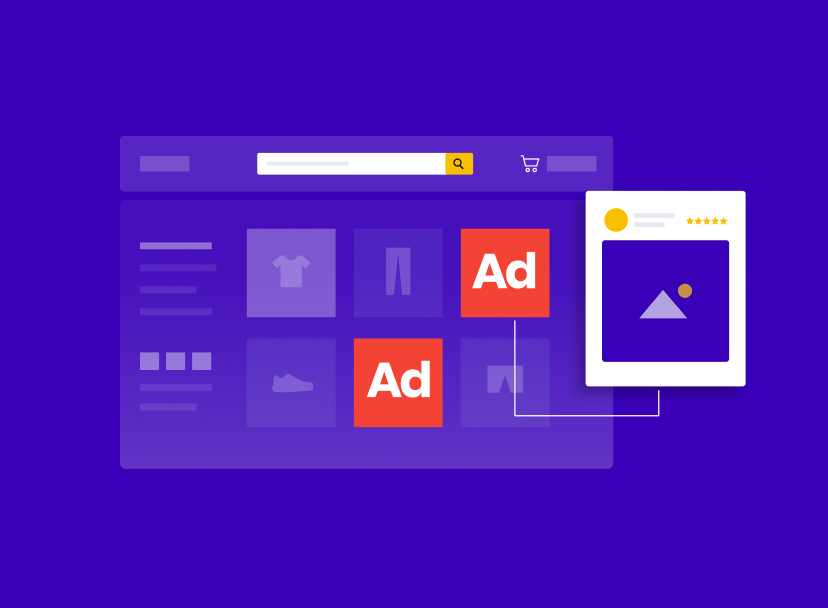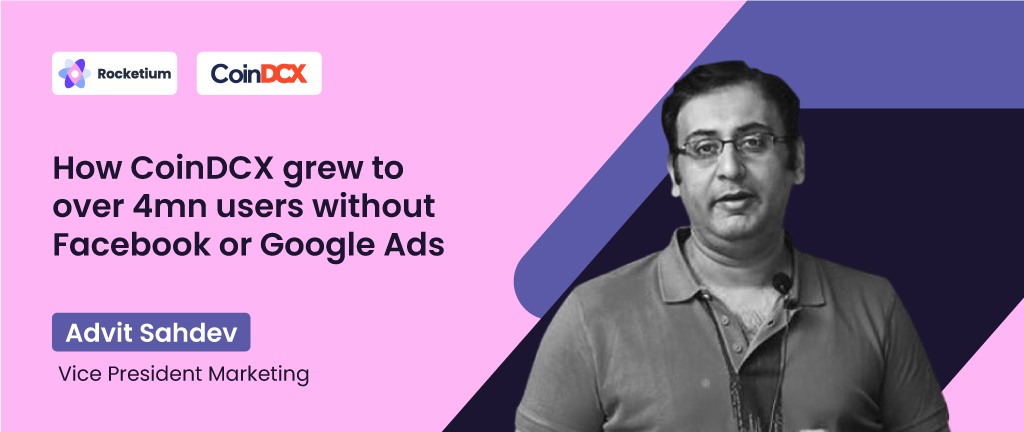Speaker Info

Advit Sahdev
Vice President Marketing
CoinDCX
How CoinDCX grew to over 4mn users without Facebook or Google Ads 📈 🚀
How This Crypto Brand Used Non-Traditional Channels for Driving Customer Engagement and Growth
Are you quick to try out new products or do you generally tend to be cautious? If you’re like most people, you are probably saying, “Well, that depends on whether or not the product is a fad.” And you wouldn’t be wrong. It is important to weigh a product based on the value it holds for you, regardless of what you might see in the media – especially when it comes to investing.
Crypto currency has captivated the imagination of young and old alike. Now that the government is bringing out a digital version of the rupee, you can be sure that it’s not just another passing fad. Did you know that Facebook and Google don’t allow crypto brands to run ads?
However, crypto exchanges like Coin DCX aren’t giving up on their efforts on customer engagement. They are leveraging educational video and collaborations to capitalize on the growing interest among investors. That the company has over 4 million users today speaks volumes about the effectiveness of their marketing strategy.
To put matters into perspective, Coin DCX went live just about 4 years ago on 7th April 2018.
Speaking to Spilling the Magic Beans – a growth marketing podcast hosted by Rocketium – Advit Sahdev, Vice President Marketing says, “In India, financial education is zero at school; they don’t teach you how to invest money.” This was a key challenge that needed to be addressed before crypto could reach its full potential.
He says crypto was going through the “same category creation curve that is there for every new category,” just like the eCommerce sector a decade ago. This led the company to launch DCX Learn, an e-learning platform that helps consumers understand the basics of investing – not just in crypto, but across the board.
Customer Education is the Key to Building Customer Engagement and Trust: Advit Sahdevof Coin DCX
“We have blogs, we have video content which goes on YouTube, which goes on Instagram. All of that adds a lot, not just to growing our user base, but to getting serious investors and building trust in the community,” Advit explains.
Here are some of the strategies that Advit’s team has been successfully using to drive engagement and growth:
1. Define user personas
Advit advises brands to differentiate between the needs of early adopters as well as more conservative customers. Across verticals, a small percentage of customers always take the initiative to learn more about new products without relying on branded content. This cohort is generally far ahead of the curve when it comes to trading and is more interested in capital growth.
So “we focus on getting them migrated and to go from a basic level of user to an advanced level of user,” he explains. In marketing speak, this means building a more evolved user flow than most other cohorts.
Advit recommends segmenting customers on the basis of usage frequency, interests, level of education, and risk potential to match the right product to the right customers.
2. Identifying early adopters
Unlike other verticals, crypto has been facing regulatory headwinds, including tough restrictions on advertising. In such a situation, Advit prefers to, “focus on what they can control.” In the absence of customer data from Facebook or Google, they rely on the market experience of their core team to identify cohorts with the highest affinity for crypto.
They then tie up with strategic partners like game publishers to target users based on location, age, and language. Using a broad-based collaboration strategy, Advit has been able to successfully engage the internet-savvy Gen Z among others.
He admits that the initial inputs for the targeting strategy came from the core team who “understood the audience very well”. If you lack in-house market experience, Advit recommends getting down to the basics- defining and addressing the most common objections that prospective users were likely to have.
For Coin DCX, the biggest challenge was customer apprehensions regarding the legal and regulatory aspects of crypto. In response, the company built safety-focused features into its platform – crypto insurance and a 7-tier verification process called Seven M for currencies that wanted to list on it.
They also offered portfolio management services similar to that of mutual funds. These measures were backed by digital, print, and TV campaigns designed to simplify crypto and improve customer engagement.
3. Choosing the right media
Advit is categorical when he says that “video is a lot more powerful than any other medium” in creating differentiation in the minds of the audience. Images and video allow brands to build a brand perception that is “extremely different,”, he says.
For example, it can allow brands to present themselves as a “very down to earth brand which is connected to the locals” rather than a large corporate organization functioning out of a plush office. Video can communicate attributes like simplicity, compliance and safety through imagery, music, lighting and background.
There is another reason why the company is targeting the younger generation. The company found that their influence played a key role in converting the 50+ cohort who were less likely to engage with ads. This is also because older people are generally not very knowledgeable about technologies like blockchain, etc.
4. Retention focus
To sustain a high growth rate, prioritizing retention is vital. Unlike eCommerce or FinTech, a crypto exchange cannot push product recommendations on behalf of sellers. Its job is only to facilitate transactions. So Coin DCX uses contextual messaging via in-app notifications or news feed based on behavioral triggers.
Advit says that incentives can only drive installs or activation in the short term. Personalized content based on affinity and customer journey mapping is perhaps the only sustainable way to “get them to start trusting this particular platform,” he says.
Moreover, brands must focus on “address(ing) particular needs at the exact right time” to build customer engagement and trust. This means going beyond metrics like average usage frequency, transaction history and install rate to understand the underlying factors.
For example, if a customer loses money on a trade, they would expect an explanation on the market dynamics behind the fall in prices as opposed to possible solutions like portfolio diversification. So, brands need to explain the ‘why’ before the ‘what next’. This can be crucial to keeping them engaged and driving customer lifetime value.
5. Scaling personalization
Like most brands, Advit is well aware of the personalization challenges that come with scale. He advocates keeping a close watch on key metrics like open rate and drop-off rate and optimize their user journeys (flows).
“There’s no other way. You have to use tools,” to measure and respond to changes in customer experience. Creative automation is a big part of ensuring consistent, relevant campaigns across channels for a large number of cohorts. It can bridge the quality versus cost gap that many brands struggle with today.
Last Words
Coin DCX’s case is quite unique in that it does not have access to two of the biggest digital ad networks in the world. However, it has managed to overcome those constraints by building a deep understanding of their audiences, anticipating their objections, and developing product features and strategic campaigns to address them.
Advit’s advice about choosing the right media mix is also critical in a time of declining CTR and leaner marketing budgets. Lastly, tailor-made experiences are no longer an option and automation is non-negotiable for ensuring a consistent campaign quality.













